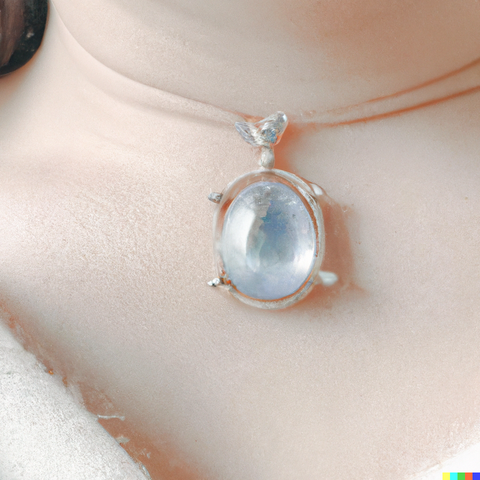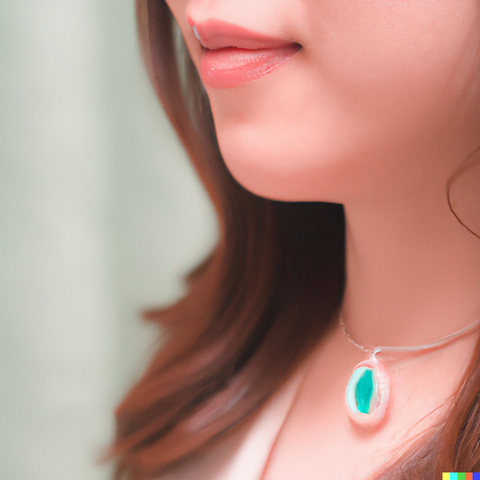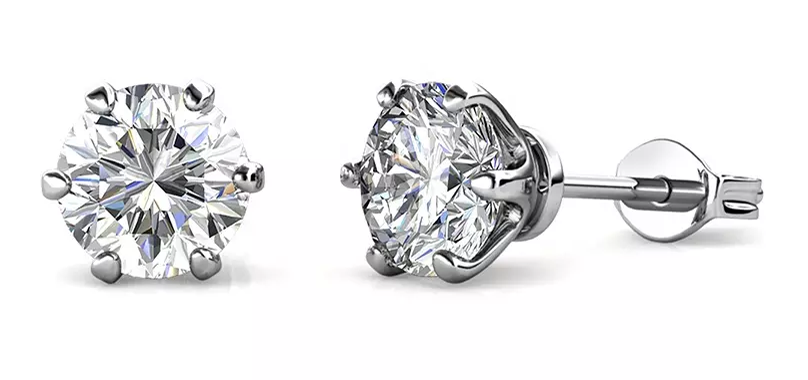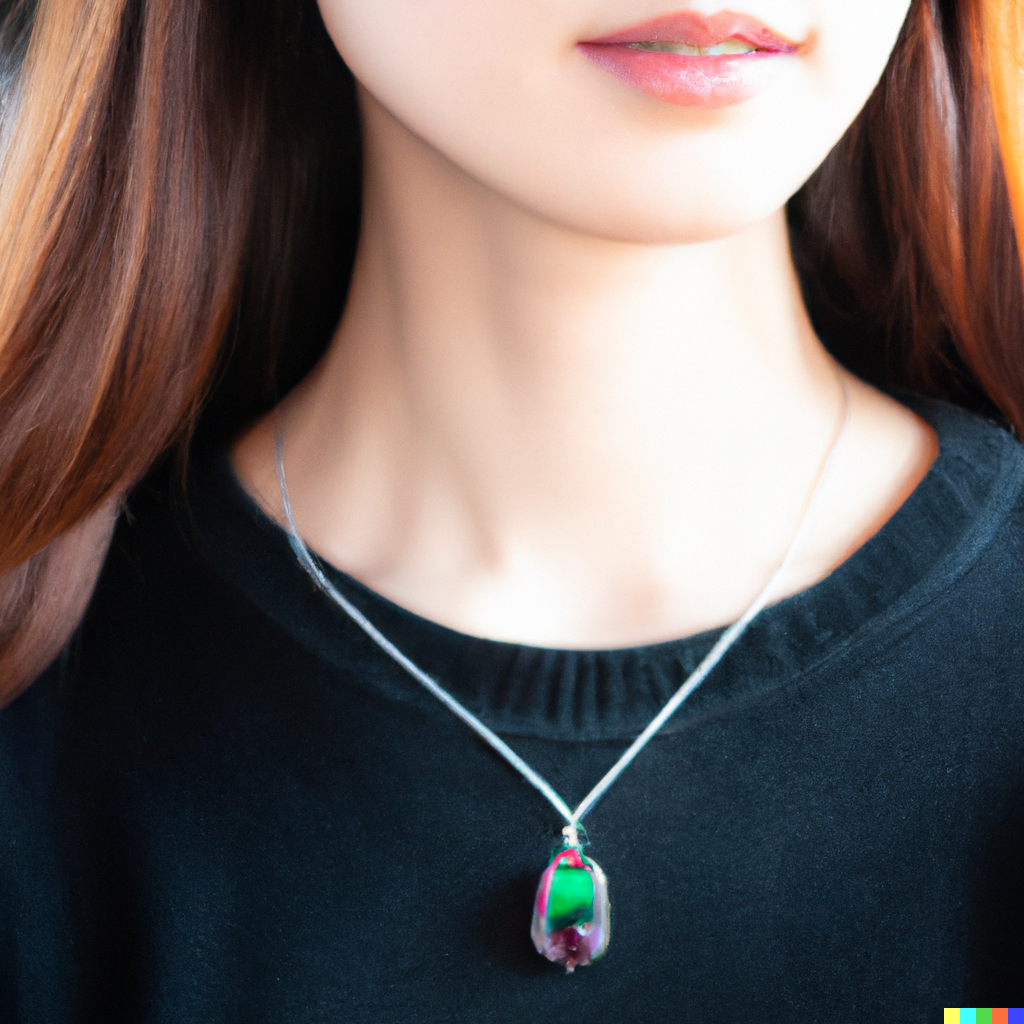Moonstone: Gemstone and Jewelry
Moonstone is a stunningly beautiful gemstone, with a rich history, and a mystical aura. It has been beloved and valued for centuries and is often used in jewelry items like rings, earrings, pendants, necklaces, and bracelets. Moonstone's unique physical and chemical properties, as well as its rich symbolism, make it a fascinating gemstone and a beautiful addition to anyone's jewelry collection. This article will explore the history, characteristics, metaphysical properties, and uses of moonstone in jewelry, including the different types of moonstone, their properties, and how to care for them. Additionally, we'll explore some significant moonstone jewelry pieces and investigate how the gemstone has been valued throughout time.

The History of Moonstone Jewelry:
Moonstone is a member of the feldspar family, which includes other precious stones like sunstone, labradorite, and amazonite. Moonstone comes in a variety of colors, with white, milky, or opalescent stones being the most prevalent. Other colors include yellow, blue, grey, peach, and brown.
Moonstone can be found in many countries around the world, like India, Madagascar, Sri Lanka, and Myanmar, and has been mined since ancient times. The ancient Romans and Greeks believed that moonstone was formed from the light of the moon, and hence it was considered a sacred and mystical stone. In ancient India, it was believed that moonstone was a magical gemstone that brought good luck, ensured a happy marriage, and enhanced fertility. The ancient Romans valued moonstone as a talisman to bring good fortune, while the Greeks believed that the stone could protect against all kinds of harm.
Moonstone began to gain popularity in Europe during the Art Nouveau period in the late 19th century, with its popularity peaking during the Edwardian era. It was a favorite gemstone of the Art Nouveau and Arts and Crafts movements, which sought to incorporate natural elements and materials into their designs. During this era, moonstone was often used in delicate, elegant jewelry pieces adorned with filigree or intricately woven metals.

The Characteristics of Moonstone:
Moonstone belongs to the feldspar family and is composed of two minerals - orthoclase and albite. The characteristic feature of moonstone is the adularescence effect - a sheen or glow caused by the interference of light on the microscopic layers of feldspar. Moonstone has a hardness rating of 6.0 - 6.5 on the Mohs scale, which makes it relatively weak in comparison to other precious stones.
However, it can still be used in jewelry items that are not prone to scratching or knocking. Moonstone is incredibly versatile, and its colors and patterns can vary widely. The stone can occur as a transparent or translucent gemstone that exhibits a blue or white glow or sheen. Moonstone can also exhibit chatoyancy, which is a cat's eye effect caused by inclusions within the stone.

The Metaphysical Properties of Moonstone:
Moonstone is often associated with emotional balance and inner growth. It is believed to have the power to bring peace and harmony to its wearer and help develop intuition, empathy, and insight. It's also used to help manage anxiety and stress and to promote a restful sleep. In Vedic astrology, moonstone is associated with the planet Moon, and it is believed to enhance the positive energies of the Moon.
It is thought to strengthen emotional connections and enhance creativity, intuition, and stability. Moonstone is also associated with the chakras of the Crown and Heart. It is thought to balance the emotional and mental energies of these chakras, helping to connect us with our higher selves and promote holistic growth.

The Different Types of Moonstone:
There are several types of moonstone, each with its unique properties and physical characteristics. Below are some of the most commonly known types of moonstone:
- Adularia Moonstone: These are the most common moonstones and often exhibit the characteristic blue sheen or glow. Adularia moonstones are found in India, Sri Lanka, and Myanmar.
- Rainbow Moonstone: This type of moonstone exhibits a rainbow of colors, which are caused by the interference of light on the microscopic layers of feldspar. Rainbow moonstones are mined in India.
- Grey Moonstone: Grey moonstones are mainly found in Mexico and are characterized by their unique color and chatoyancy.
- Peach Moonstone: Peach moonstones are found in the United States and exhibit a warm peachy color. They are not as well-known as other types of moonstones but are still valuable additions to any jewelry collection.

Uses of Moonstone in Jewelry:
Moonstone's unique properties make it ideal for use in jewelry pieces. Moonstone can be incorporated into different styles of jewelry, such as rings, pendants, earrings, necklaces, and bracelets. It pairs well with other gemstones like turquoise, amethyst, and labradorite. Moonstone jewelry is popular among both men and women and can range from delicate, intricate pieces to bold statement pieces.
Its delicate and subtle colors make it an excellent gemstone for weddings, anniversaries, birthdays, and other special occasions. Moonstone jewelry is also available in different types of metal, including sterling silver, gold, and rose gold. When paired with gold or rose gold, moonstone can create a luxurious and elegant look. Sterling silver moonstone jewelry is more affordable and can be used to create delicate, intricate pieces that will stand the test of time.

Significant Moonstone Jewelry Pieces:
Moonstone has been used in several significant jewelry pieces throughout history. Below are some notable pieces:
- The moonstone necklace worn by Olga Romanov: Olga Romanov was the eldest daughter of Tsar Nicholas II of Russia. She was known to have worn a stunning moonstone necklace in her portraits. The necklace is believed to have been a gift from her grandmother, Queen Alexandra of England.
- The moonstone tiara worn by Empress Farah Pahlavi of Iran: The Empress of Iran was known for wearing a stunning moonstone tiara. The tiara features a central moonstone surrounded by diamonds and other gemstones.
- The moonstone brooch given by King Edward VII: King Edward VII gave a stunning moonstone brooch to Queen Alexandra of England as a gift. The brooch features a large moonstone surrounded by diamonds and is a stunning example of the delicate and intricate jewelry pieces popular during the Edwardian era.

Caring for Your Moonstone Jewelry:
To keep your moonstone jewelry looking its best, it's essential to care for it properly. Moonstone is relatively delicate and should be protected from scratches, ultrasonic cleaners, or harsh chemicals. Below are some tips on how to care for your moonstone jewelry:
- Clean your moonstone jewelry with mild soap and warm water: Avoid using harsh chemicals or ultrasonic cleaners on your moonstone jewelry. Place the jewelry in a bowl of warm water and add mild soap. Soak for 10 to 15 minutes, then gently remove with a soft-bristle brush.
- Avoid exposing your moonstone jewelry to extreme heat or cold: Moonstone is sensitive to temperature changes and can crack or break when exposed to extreme temperatures.
- Store your moonstone jewelry in a padded container: To protect your moonstone jewelry from scratches, keep it in a padded container or pouch.

Moonstone is a beautiful, mystical gemstone that has been cherished and valued for centuries. Its unique physical and chemical properties, as well as its rich symbolism, have made it a popular choice for jewelry designers and collectors around the world. Whether you're looking for a delicate, intricate piece of moonstone jewelry or a bold statement piece, moonstone offers a variety of options. Its delicate colors, unique properties, and rich history make it a stunning addition to any jewelry collection. With proper care and attention, your moonstone jewelry will dazzle for years to come.






















Leave a comment